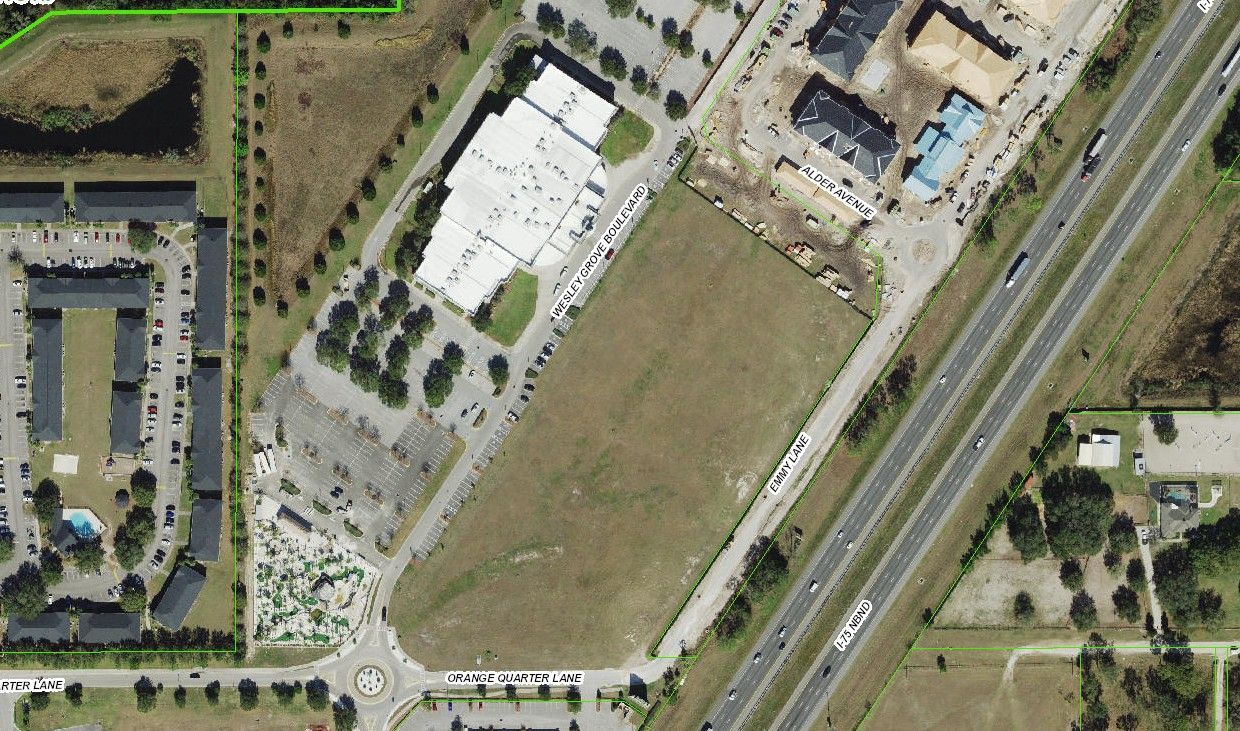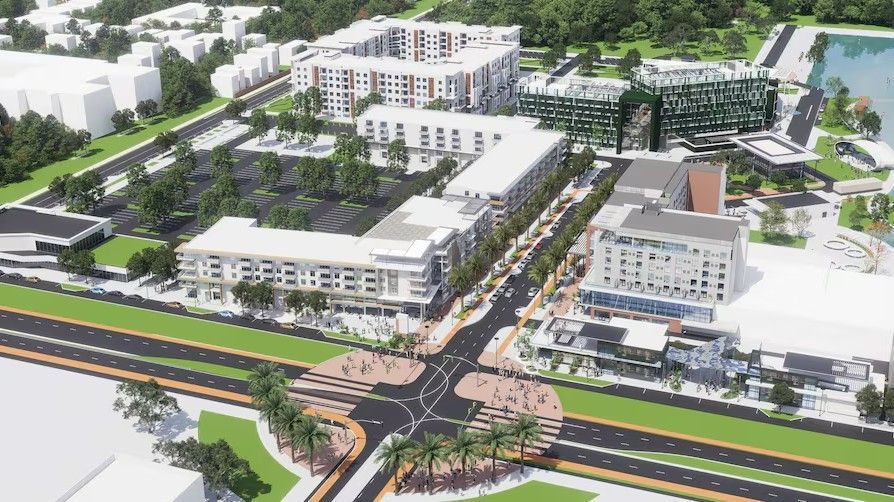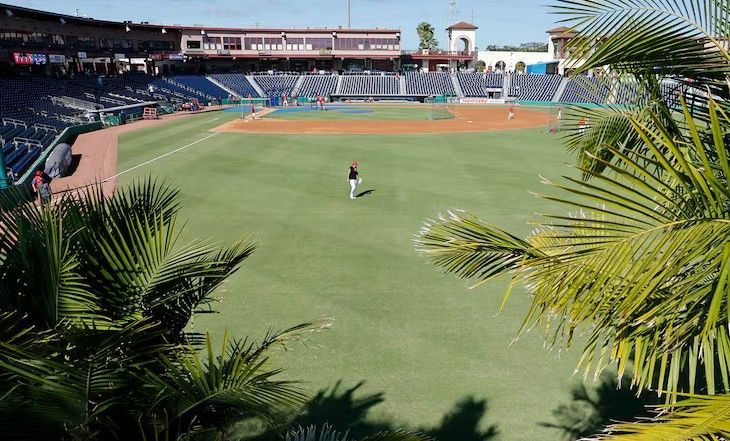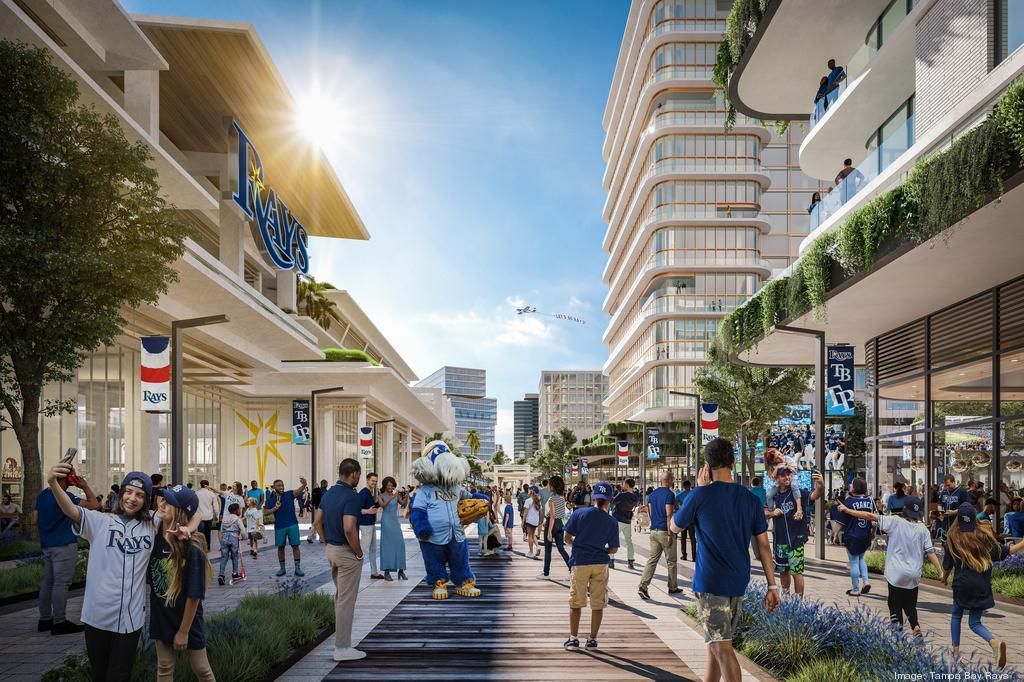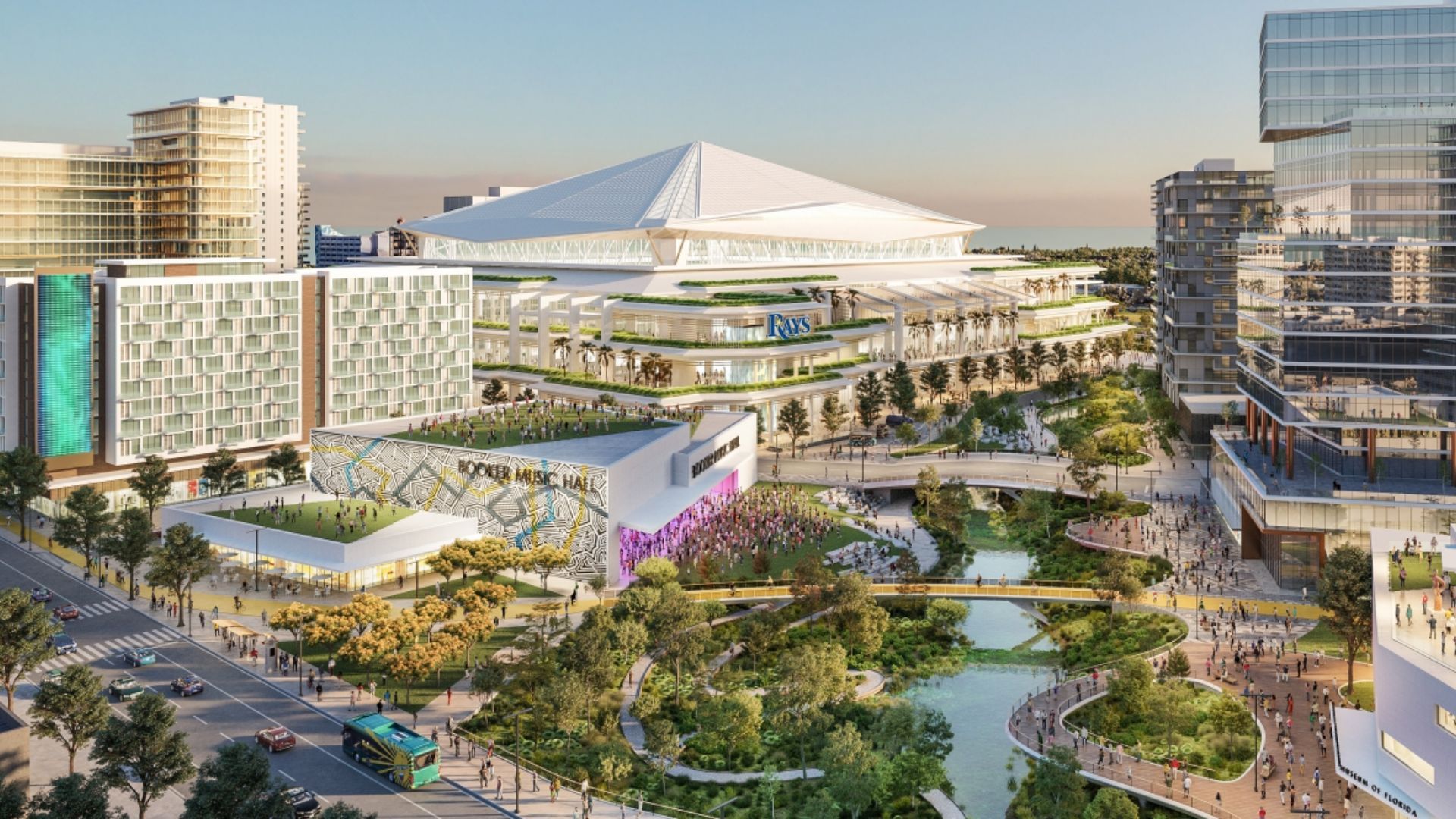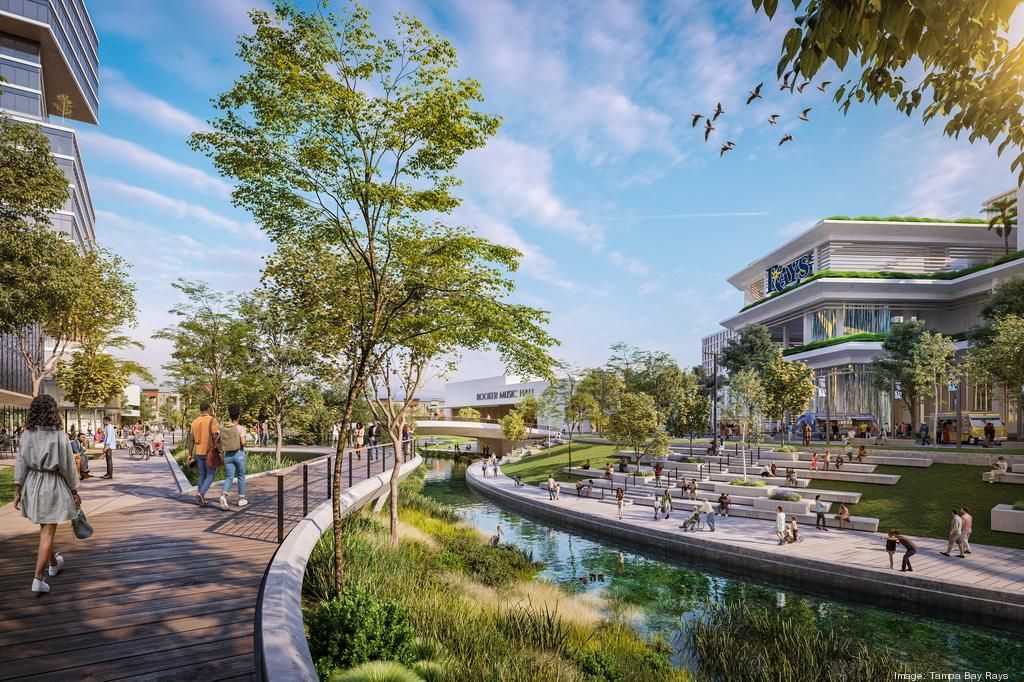Tampa Bay Rays announce stadium deal in St. Petersburg
This morning the Rays have officially announced that they have reached a deal with Pinellas County and the City of St. Petersburg to build a new $1.3 billion stadium in the Historic Gas Plant District – home to the current home of the Rays, Tropicana Field. The team along with development firm Hines were chosen to redevelop the 86-acre Gas Plant district back in January into a mixed-use district anchored by a ballpark.
The entire investment into the redevelopment of Tropicana Field is estimated to exceed $6 billion. Construction will begin the fourth quarter of 2024 and opening day of 2028 will be spent in the new stadium. Staying on Tropicana property also means the team will be entitled to half of the development proceeds from the new district.
The new stadium will be a fixed-dome roof situated next to the current site of Tropicana Field. It will have a 30,000 seat capacity, and windows will allow natural sunlight to enter the stadium. The Rays are expecting to receive $600 million of public funding split between Pinellas County and St. Petersburg. Team ownership will contribute the remaining $700 million, in addition to any budget overages. Private financing and selling off partial ownership stakes will help with the process for owners.
Despite the Rays success over the last half-decade and being one of the top teams in the MLB, they struggle to fill stadium seats. Fewer than 18,000 fans show up per home game despite a successful season. This is not only because of the undesirable aesthetics of Tropicana field, but also traffic and transit problems in Tampa Bay that make the site incredibly difficult to access. Principal owner Stu Sternberg hopes the new stadium alone will draw in more fans, despite many expressing the want for a stadium in Tampa.
The announcement brings 15 years of stadium negotiations and proposals to an end. Reactions from Tampa Bay residents are mixed – some are delighted the team is staying in the region while even more appear disappointed the stadium would not be moving to Tampa. Here is a recap on the entire Hines/Rays development of the Gas Plant district that will be anchored by the new stadium:
The team proposed a 7-million SF redevelopment plan for a mixed-use community that will surround a new ballpark for the Rays. The development will be one of the largest in St. Petersburg’s history and sets the stage for the next chapter of the city. Besides a new baseball stadium, the proposal includes 5,700 multifamily units with 850 set aside for affordable and workforce housing units on-site, and around 600 similar units off-site. Additionally, they will develop 1.4 million square feet of office space, 300,000 square feet of retail, a 2,500-person entertainment venue, 700 hotel rooms, and 600 senior living residences. A music hall will be constructed on the property and the Dr. Carter G. Woodson African American Museum will be relocated to the site.
Source: Wall Street Journal
Thank you for your interest. If you need appraisal or valuation services in the St. Petersburg area please contact:
SHARE CONTENT
